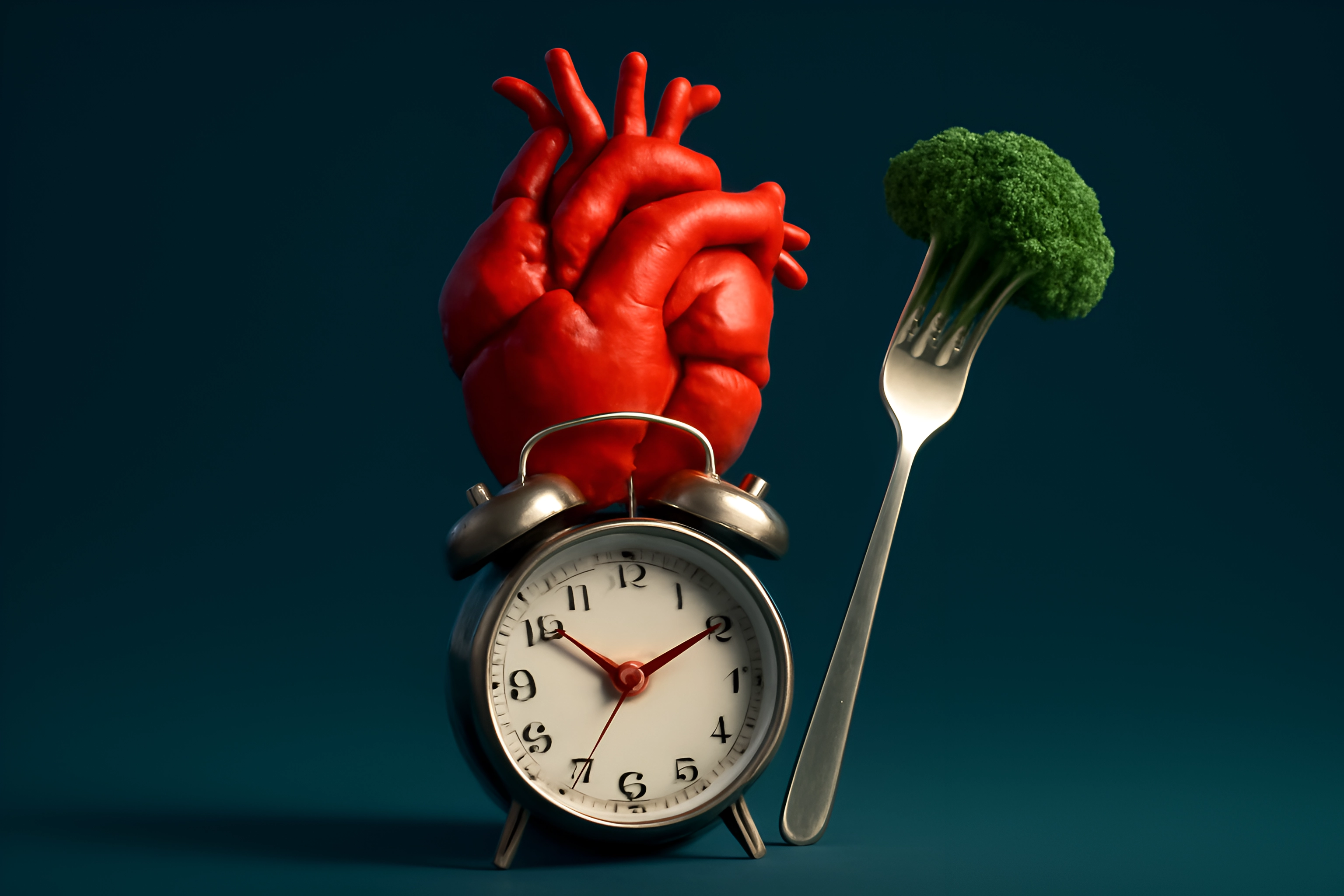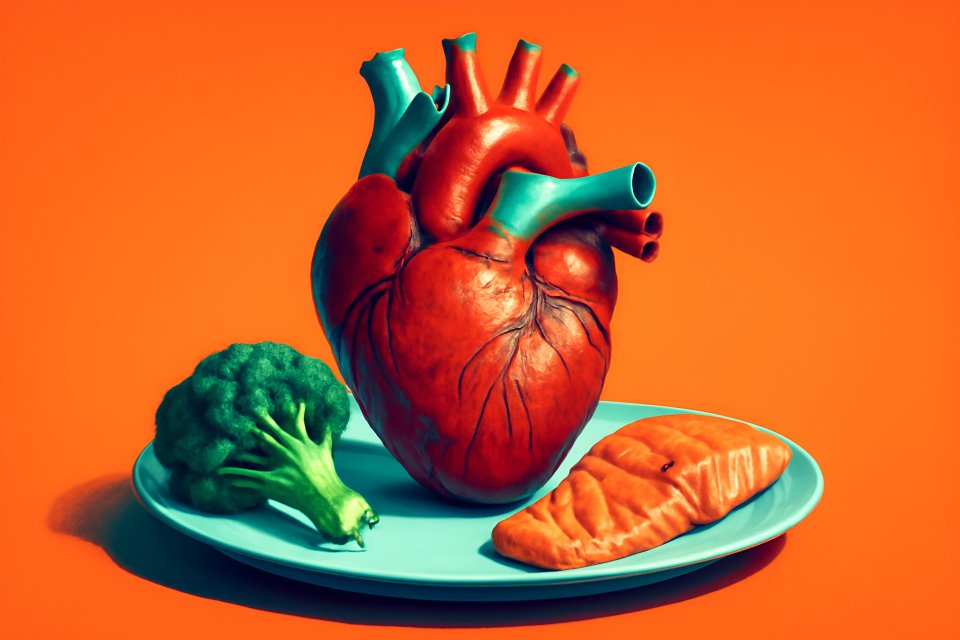
Do you ever feel that dreaded energy crash in the afternoon, or lie awake at night wondering if your eating habits are truly supporting your heart? As we navigate life over 50, our bodies send us new signals. It’s a time of incredible wisdom and freedom, but it also demands a smarter approach to our health, especially the engine that powers it all: our heart.
What if I told you that one of the most powerful tools for fortifying your heart isn't about a restrictive diet, but about a simple, profound shift in timing? This is the secret of nutrient timing, a strategy that works with your body's natural rhythms, not against them. Research shows that something as simple as inconsistent mealtimes can increase systolic blood pressure by nearly 3 points, putting unnecessary strain on your cardiovascular system.
This guide is your roadmap to demystifying nutrient timing. We're not talking about deprivation or complicated rules. We're talking about providing you with actionable, science-backed strategies to boost your energy, manage your weight, and—most importantly—build a resilient heart for the vibrant years ahead. We'll give you practical cardiovascular nutrition tips you can start using today, turning every meal into an opportunity for renewed vitality.
Why Nutrient Timing Matters More Than Ever After 50
Let’s be honest: the body you have today isn’t the same one you had at 25. And that’s a beautiful thing! But it means our old habits may no longer serve us. Understanding why timing matters now is the first step toward taking back control and working in harmony with your body’s incredible intelligence.
One of the biggest shifts we experience is in our metabolism. Our resting metabolic rate can decline by up to 10% as we age, a change driven by shifts in mitochondrial function. This is why strategically timing your meals is so crucial for weight management and overall energy. By aligning your food intake with your body's peak metabolic periods, you give it the fuel it needs precisely when it can use it most efficiently, preventing the storage of excess fat that can strain your heart.
Furthermore, our body's relationship with insulin changes. Age-related insulin resistance can make it harder for our cells to absorb glucose from the blood, a key factor in cardiovascular health. Spacing out balanced meals helps maintain stable blood sugar, preventing the sharp spikes and crashes that tax our system. This all ties into our circadian rhythms—our internal body clock. When we eat at irregular times, especially late at night, we disrupt the clocks in our organs, which can increase body fat, blood pressure, and HbA1c levels, directly impacting our heart health.
The Core Principles of Nutrient Timing for Heart Health Over 50
Ready to turn theory into action? These four principles are the foundation of a heart-smart eating rhythm. They aren’t rigid rules but powerful guidelines to help you listen to your body and give it what it needs, when it needs it.
Principle 1: Front-Load Your Day for All-Day Energy
Think of your metabolism as a bonfire. Do you want to start it with a tiny twig or a solid log? Eating a substantial, balanced breakfast within one to two hours of waking is like putting a solid log on the fire, setting you up for steady, sustained energy all day long. In fact, studies show that eating your first meal before 8 a.m. is linked to a 15% lower risk of cardiovascular events.
The key is to build your breakfast around a powerful trio: lean protein for satiety, high-fiber carbohydrates for digestive and heart health, and healthy fats for lasting energy. Imagine starting your day with a bowl of oatmeal topped with berries and walnuts, or two scrambled eggs with spinach and a slice of whole-grain toast. These aren't just meals; they are strategic fuel sources that stabilize your blood sugar and prevent that mid-morning slump. For more delicious ideas, explore our guide to balanced breakfasts for seniors.
By front-loading your calories, you align your eating with your body's peak metabolic efficiency. This simple act helps prevent overeating later in the day when your metabolism naturally begins to slow down. Research confirms that regular breakfast eaters tend to have improved lipid profiles and a 20-30% lower risk of hypertension, making it one of the most impactful habits for long-term heart health.
Principle 2: Eat Consistently to Avoid Peaks and Crashes
Have you ever been so hungry you could eat anything in sight, only to feel sluggish and bloated afterward? Those moments of extreme hunger often lead to overeating and wild blood sugar fluctuations, which put immense strain on your heart. The solution is simple yet profound: eat consistently, aiming for a meal or healthy snack every 3-5 hours.
This rhythm prevents the desperate hunger that sabotages our best intentions. Day-to-day inconsistency in meal timing is directly correlated with 2-to-3-point increases in blood pressure and higher body fat. By providing your body with a steady stream of nutrients, you maintain stable blood sugar, which is a cornerstone of effective meal timing for seniors and a powerful defense against age-related insulin resistance.
The American Heart Association emphasizes that this consistency is about more than just avoiding hunger pangs; it’s about supporting your body's internal clocks. Erratic eating patterns disrupt your circadian rhythms, which can increase cardiometabolic risks like inflammation and high blood pressure. A predictable schedule, on the other hand, creates a stable internal environment where your cardiovascular system can function optimally, without the stress of constant ups and downs.
Principle 3: Fuel Your Fitness, Protect Your Muscle
Exercise is non-negotiable for a healthy heart, but are you fueling it correctly? As we age, preserving lean muscle mass becomes paramount, as muscle is a metabolically active tissue that helps power our entire system. Proper nutrient timing around your workouts is your secret weapon for protecting that precious muscle.
About 30-60 minutes before you move, think energy, not a full meal. A small, easily digestible carbohydrate like a banana or a handful of whole-grain crackers provides the quick fuel your muscles need to perform their best. This isn't about "carbo-loading"; it's about giving your body an accessible energy source to power you through one of our adaptive home workouts for beginners over 50.
The real magic happens after your workout. Within one to two hours of finishing, you need to replenish and repair. This is where a combination of protein and carbohydrates is critical. Older adults face "anabolic resistance," meaning our muscles need a stronger signal to grow and repair. Consuming 20-30 grams of high-quality protein post-workout—from sources like Greek yogurt, a protein smoothie, or grilled chicken—provides that signal, helping you rebuild stronger and maintain the lean mass that supports a healthy heart.
Principle 4: Taper Your Meals as the Day Winds Down
Just as you front-load your day for energy, it’s equally important to taper your food intake as the day winds down. A large, heavy meal late at night is a recipe for disrupted sleep, indigestion, and increased cardiovascular strain. Your body is trying to rest and repair, not digest a five-course meal.
The golden rule is to finish your last meal at least 2-3 hours before you go to bed. This gives your digestive system ample time to do its job, allowing your body to transition into a state of deep, restorative sleep—which is absolutely critical for heart health. Research is starkly clear on this: eating late at night is associated with a nearly 30% higher risk of cardiovascular events.
Your evening meal should be nourishing yet light. Focus on lean proteins, healthy fats, and plenty of vegetables, like baked salmon with roasted asparagus or a hearty lentil soup. Studies have found that replacing low-quality carbs or animal protein at dinner with high-quality plant protein can lower heart disease risk by up to 60%. For delicious inspiration, check out our guide to nutrient-dense dinner ideas for heart health.
Your Sample Heart-Healthy Nutrition Schedule
So, what does this look like in a real day? Here is a sample heart healthy nutrition schedule to bring these principles to life. Remember, this is a template, not a prescription. The most important thing is to listen to your body and adjust to find the rhythm that makes you feel your absolute best.
| Time | Meal / Snack | The "Why" Behind It |
|---|---|---|
| 7:30 AM | Breakfast | Scrambled eggs with avocado and a slice of whole-grain toast. Provides protein, fiber, and healthy fats to kickstart metabolism. |
| 11:00 AM | Light Snack | An apple with a tablespoon of almond butter. Prevents extreme hunger and keeps blood sugar stable before lunch. |
| 1:30 PM | Lunch | Grilled chicken or chickpea salad with mixed greens and an olive oil vinaigrette. A balanced meal of lean protein and anti-inflammatory fats. |
| 4:00 PM | Pre-Workout Snack | A small bowl of Greek yogurt. Offers easily digestible protein and carbs to fuel your afternoon activity. |
| 6:30 PM | Dinner | Baked salmon with roasted asparagus and a small portion of quinoa. A light yet nutrient-dense meal rich in omega-3s, finished well before bedtime. |
Frequently Asked Questions (FAQ)
What about intermittent fasting? Is it safe for heart health over 50?
Intermittent fasting has gained a lot of attention, but it's crucial to approach it with caution after 50. While some find it beneficial, for many older adults, a consistent eating pattern is more effective for preserving muscle mass and maintaining stable energy. Research from the American Heart Association suggests that reducing total daily calories is more effective for weight loss than time-restricted eating. Crucially, you must consult your doctor before making drastic changes like fasting, especially if you have pre-existing conditions or are on medication.
Do I really have to eat breakfast if I'm not hungry?
While forcing a large meal is never the answer, skipping breakfast entirely is linked to a 20-30% higher risk of hypertension and metabolic syndrome. The key is to start small. Even a hard-boiled egg, a small protein smoothie, or a handful of nuts can be enough to break your overnight fast, stabilize blood sugar, and kickstart your metabolism. Often, once you get into the habit, your body’s natural appetite signals will adjust.
What are the best heart-healthy foods to have on hand?
Stocking your kitchen with the right foods makes following a heart-healthy plan effortless. Here are some essentials to keep on hand, which you can learn more about in our guide to age-defying nutrition and meal planning:
- Lean Proteins: Salmon, chicken breast, beans, lentils, tofu.
- High-Fiber Carbs: Oats, quinoa, berries, leafy greens.
- Healthy Fats: Avocado, nuts, seeds, olive oil.
Conclusion: Your Timing, Your Vitality
Ultimately, mastering nutrient timing for heart health over 50 is about creating a sustainable rhythm, not following a set of rigid, unforgiving rules. It’s about honoring your body’s wisdom by front-loading your energy, eating consistently, fueling your movement, and tapering down as the day ends. This approach supports stable energy, a resilient heart, and the active lifestyle you deserve.
By paying attention to when you eat, you're giving your body one of the most powerful tools for aging with strength and vitality. It’s another step toward taking control of your health and living your fullest life, one well-timed, delicious meal at a time. Remember that nutrition is just one piece of the puzzle; you can further support your cardiovascular system by exploring our guides on Heart Health and Vital Nutrition.
What’s one small timing tweak you can try this week? Share your thoughts in the comments below












